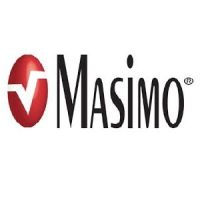Masimo has announced that in a new clinical study, Masimo's Oxygen Reserve Index (ORI™), the first noninvasive and continuous parameter to provide insight into patients' oxygen reserve when they are receiving supplemental oxygen, helped clinicians in the early identification of impending desaturation in pediatric patients during induction of anesthesia.1
Oxygen saturation (SpO2) using pulse oximetry provides noninvasive, continuous visibility to arterial blood oxygenation in hypoxia (lower than normal oxygenation) and normoxia (normal oxygenation). For procedures such as induction of anesthesia and intubation, clinicians will usually build an "oxygen reserve" in the patient by providing supplemental oxygen or "pre-oxygenation," creating a transitional state of hyperoxia (higher than normal oxygenation). The extent of hyperoxia can be determined by the measured partial pressure of oxygen in the blood (PaO2 ), which requires invasive arterial blood sampling and laboratory analysis. When patients have low oxygen reserve prior to intubation of the trachea, they are susceptible to sudden hypoxia, depending upon the time taken to perform the intubation.
ORI, Masimo's 11th rainbow® parameter2, is a relative index of the partial pressure of oxygen in arterial blood (PaO2) within the range of 100 to 200 mmHg that can provide insight into significant changes in oxygen reserve. ORI is intended to supplement, not replace, SpO2 monitoring and PaO2 measurements.
After pre-oxygenation with supplemental oxygen, anesthesia induction, and endotracheal intubation, the anesthesia circuit was disconnected and SpO2 was allowed to decrease to 90% before ventilation recommenced. During the period of apnea, the ORI progressively decreased from a mean of 0.73 ±0.2 at the beginning of apnea to 0.37 ± 0.1. The SpO2 remained at 100% during this initial period. After decreases in ORI that would trigger the ORI alarm if monitored in real time, there was a median elapsed time of 31.5 seconds before the SpO2 decreased to 98%. After reinstitution of ventilation, SpO2 values declined further to 88%, before recovering to 98%, 34 seconds later. The researchers concluded that "In this pilot study, we found that during prolonged apnea in healthy anesthetized children, the ORI detected impending desaturation in median of 31.5 seconds (IQR, 19 to 34.3 seconds) before noticeable changes in SpO2 occurred. Knowing even roughly how much time remains before the rapid desaturation phase begins seems likely to guide proper decisions."
Radical-7® with Root® has a CE Mark with the ORI parameter. ORI is not FDA cleared and is not available for sale in the United States.
References
1 Szmuk P, Steiner JW, Olomu, PN, Ploski, RP, Sessler, DI, Ezri, T. Oxygen Reserve Index A Novel Noninvasive Measure of Oxygen Reserve—A Pilot Study. Anesthesiology 2016; 124:00-00. doi:10.1097/ALN.0000000000001009.
2 11 parameters include: 1) oxygen saturation (SpO2); 2) Pulse rate; 3) Perfusion index (PI); 4) Pleth Variability Index (PVI®); 5) Respiration Rate from the pleth (RRp®); 6) Total hemoglobin (SpHb®); 7) Oxygen Content (SpOC™); 8) Carboxyhemoglobin (SpCO®); 9) Methemoglobin (SpMet®); 10) Fractional oxygen saturation (SpfO2®); 11) Oxygen Reserve Index (ORI™).
Source & Image Credit : Masimo



























